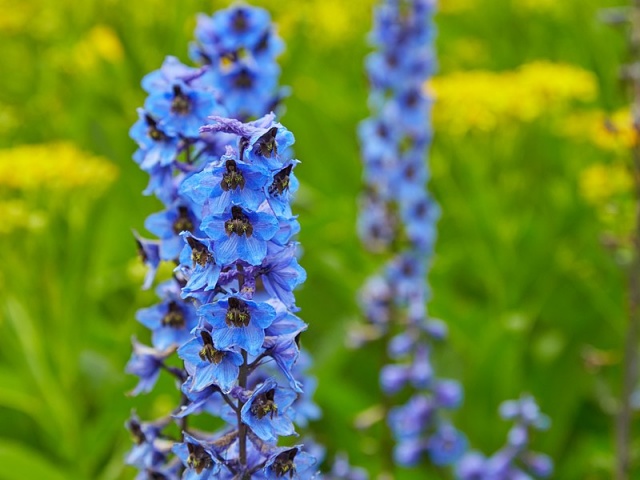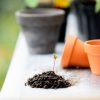Keep your garden hydrated this summer
There is no denying that we are having a scorcher of a summer. With temperatures soaring and little rainfall, maintaining garden plants can become a challenge.
Here are some handy tips to keep your garden alive – and help to use our precious water efficiently.
1. Water early or late
Water early in the morning or late in the evening, avoiding the hotter time of the day around lunchtime when the water will evaporate much quicker.
2. Water near the roots, not over the leaves. The roots absorb water that nourishes the plant; water that hits the leaves just drips off or evaporates. When you’re watering, point the hose, watering can or sprinkler low on the plant, near the roots, to make sure the plant gets adequately watered there.
3. Water long and deep. Most plants are healthiest when their roots grow deep into the ground, rather than growing outward and closer to the surface. Watering deeply, so that you completely saturate the soil, ensures that water gets all the way to the tips of the roots, and it encourages downward root growth.
4. Focus on thirsty plants
Prioritise your watering, focusing on new plants and thirsty fruit and vegetables, rather than old, established plants that have a much better chance of surviving a dry spell.
5. Move pots and container plants
Unlike the lawn, pots have the benefit of being portable, so move them into a shady spot away from the hot sun.
6. Plant drought-lovers
As for sunny borders, why not fill them with plants that can’t get enough of the sun, and don’t mind being a bit dry? Salvia, Sedum, Dianthus, Delphinium to name a few.
7. Keep water in the ground. Organic mulch such as wheat straw, finely ground bark, pine needles, or chopped-up leaves spread on the ground around and under plants is a welcome barrier between the moist soil and the hot sun and helps retain moisture. A 2- to 3-inch layer of mulch makes a huge difference in hot weather, acting as a shade cloth to hold in moisture and cool plant roots. Without mulch, the intense sun bakes the soil — and you end up watering the garden even more.
8. Be eco-conscious
Invest in a water butt – it will collect rainwater and provide an emergency solution in case of a hose ban.
9. Go high tech
An automatic watering system may well be a solution for you. Sensor Controllers automatically water at dawn and dusk, reducing evaporation, while Easy Drip Kits, can be adjusted to limit the rate at which they drip water into the soil exactly where it is most needed.
10. Precise and slow.
Large amounts of water tend to run off the soil surface rather than being absorbed into the lower layers. For this reason, it’s best to water slowly, allowing the moisture to soak into the soil and permeate down to the root level of the plants.
11. Mix water-absorbing materials into your soil.
Organic material, such as coconut coir, peat moss, or even compost, will absorb water, retaining moisture that plants can use during dry spells. Organic material also improves the structure, aeration and overall health of the soil, resulting in better long-term success for your garden.
12. Recycle water.
Recycle gray water, which is the drainage from your sinks, showers, laundry, dishwasher and other non-toilet sources. Capturing this water may take a little more effort, but the benefit to the environment and your wallet can make gray water recycling well worth it.
Lilly Light


